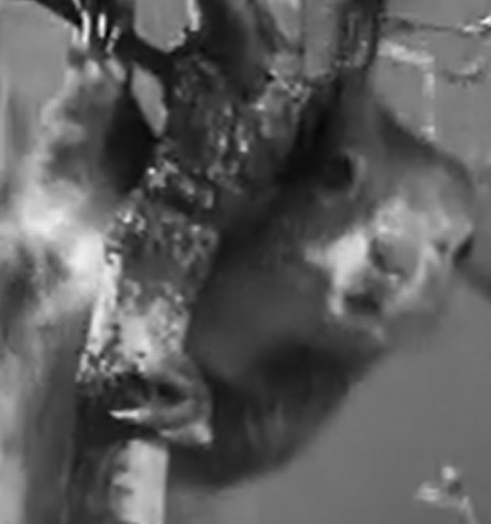The squirrel from the film La Regle Du Jeu (1939) may not have any lines in this French classic film, but its minor role has a major impact on the storyline of the film. The only time the audience is introduced to the squirrel in the film is nearing the end of the hunt. While everyone is starting to make their way back to the estate, a group of hunters and Christine stop and look at the squirrel at the top of a tree. To do this, a man hands Christine a small monocular to get the best view of the squirrel. That is when the audience gets its brief encounter with this character, according to Straw in his essay “Introduction” from “Small Players, Small Parts Dossier” in Screen he states that “we see the details of secondary performances as devices through which attention is redistributed” (79). Which is very evident here at this squirrel scene, because it takes the audience away from the hunt to focus in on a smaller event taking place. Once this sighting occurred, there is an element of foreshadowing because the following scene in the film depicts Christine looking through the same monocular, revealing that Andre and Jackie are intimately close together. As Mathijs states in his essay “Referential acting and ensemble casts” that “the tools of polysemous expression, ostentation and referentiality collapse into one set of devices” (89). Since the squirrel is unable to say any lines, this character can be seen as a polysemous symbol, to symbolize the squirrely nature of Andre. Although this squirrel had such a short amount of screen time, the effects made to film were drastic, as the audiences attention drifted away from the big hunt to the small instance that Andre wasn’t true to his word with Christine.
Works Cited
Mathijis, Ernest. “Referential Acting and the Ensemble Cast.” Screen, vol. 52, no. 1, 2011, pp. 89-96. https://doi.org/10.1093/screen/hjq063
Straw, W. “Introduction.” Screen, vol. 52, no. 1, 2011, pp. 78–81, https://doi.org/10.1093/screen/hjq057
La Regle Du Jeu (1939)

Provide Feedback